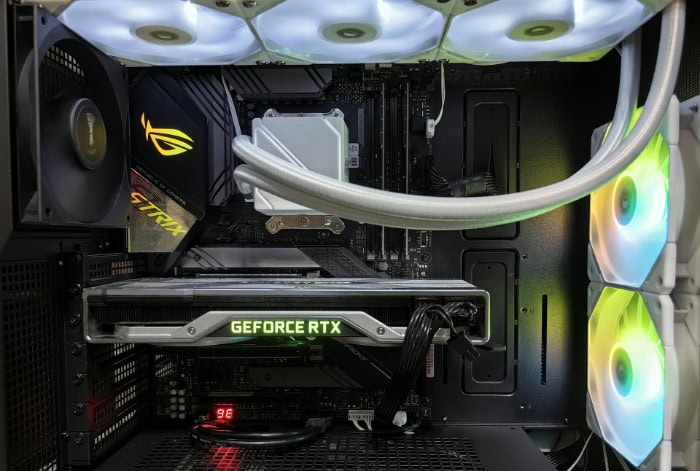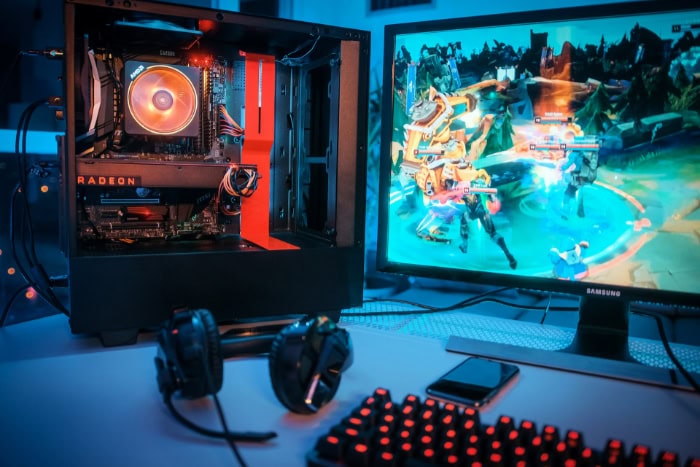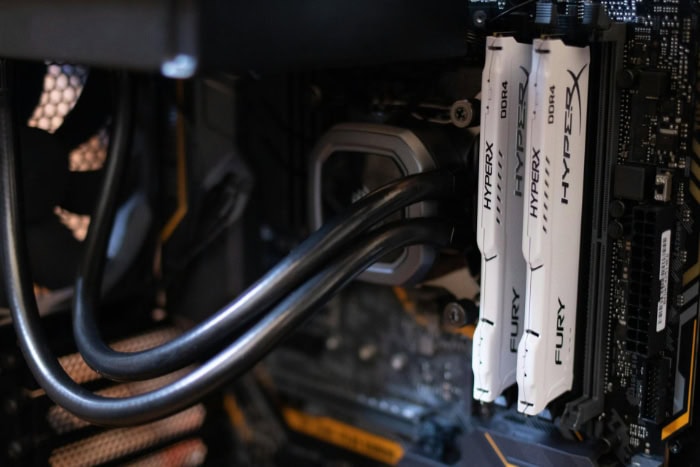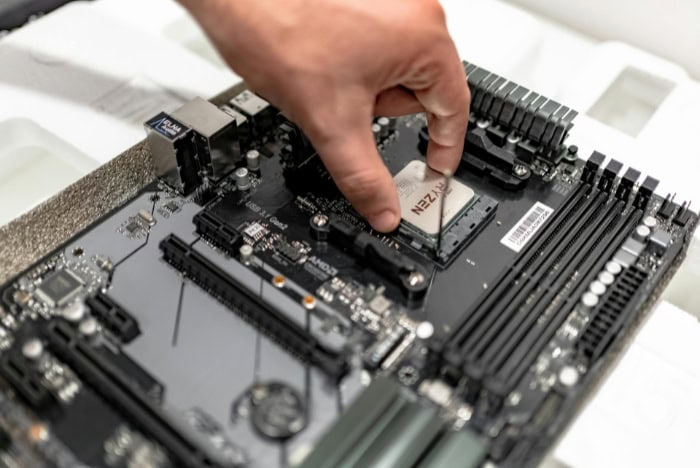What Is Overclocking? Pros, Cons, and Getting It Right

Pushing your hardware beyond its factory limits might sound risky, but for many tech enthusiasts and professionals, overclocking is the ultimate way to squeeze out every drop of performance. Whether you're aiming for higher frame rates in your favorite games, faster rendering times for creative projects, or simply looking to stretch the value of your hardware, overclocking offers a powerful solution.
This practice, which involves increasing the speed of components like CPUs, GPUs, or RAM, has become a popular pursuit in gaming communities, professional workflows, and the broader tech world. While it can deliver significant performance gains, it also comes with challenges that require careful consideration and planning.
If you’re curious about how overclocking works, its benefits, risks, and how to safely try it yourself, this guide will walk you through everything you need to know to make informed decisions.
Core Principles of Overclocking
Overclocking is a technique that involves pushing computer hardware beyond its default performance specifications, unlocking capabilities not intended by the manufacturer. To fully grasp how it works and how to apply it, it’s important to understand the components involved, the mechanics behind performance tuning, and the terminology that defines the process.
Each piece of hardware plays a distinct role, and overclocking requires a balance between speed, power, and thermal management.
Key Components
Overclocking revolves around enhancing the performance of a system's core components, each contributing differently to the overall results. The CPU (Central Processing Unit) is often the primary target, as its clock speed directly affects how quickly it processes data.
Adjusting the CPU's performance can lead to faster calculations and improved multitasking. GPUs (Graphics Processing Units) are just as crucial, especially for gamers and creators, as they handle complex rendering tasks.
Overclocking a GPU can significantly improve frame rates and rendering speed.
RAM (Random Access Memory) also plays a key role by influencing how quickly your system can access and manage data. Pushing RAM beyond its stock speeds can lead to lower latency and better performance in memory-intensive applications.
However, the motherboard ties everything together. It determines the extent of overclocking potential by offering features such as voltage adjustments and advanced cooling compatibility. A robust motherboard ensures stability and provides the necessary flexibility for fine-tuning.
How It Works
At the heart of overclocking is the concept of clock speed. Measured in MHz or GHz, clock speed is the frequency at which a component operates, processing instructions per second.
Overclocking increases this speed, allowing the hardware to perform tasks more quickly. Achieving higher speeds often involves tweaking the multiplier, which determines how many cycles a component completes per base clock (BCLK) cycle.
For example, increasing a CPU's multiplier can directly raise its operational frequency.
Voltage adjustments also come into play. Raising the voltage (commonly referred to as Vcore for CPUs or VRAM voltage for GPUs) provides the power needed to sustain higher clock speeds.
However, this generates additional heat, requiring effective cooling solutions to prevent overheating. The base clock, or BCLK, serves as the foundation for all frequency calculations.
Adjusting the BCLK impacts multiple components simultaneously, which adds complexity but can yield broader performance gains.
Fine-tuning these settings requires a balance. Pushing hardware too far can result in instability, while insufficient adjustments may not deliver noticeable benefits.
Gradual increases in clock speed and voltage, combined with regular testing, ensure performance gains without compromising system health.
Terminology
Overclocking comes with its own set of terminology, and understanding these terms makes the entire process more accessible. BCLK, or base clock, is the foundational frequency of a system. It acts as the baseline for calculating the operational speeds of the CPU, RAM, and sometimes other components.
Multiplier refers to the value that, when multiplied by the BCLK, determines a component's operating frequency.
Vcore represents the CPU's core voltage, which can be increased to sustain higher clock speeds. Similarly, VRAM voltage applies to the GPU’s onboard memory.
Thermal throttling is another critical term, describing a safety mechanism where hardware reduces its performance to avoid overheating. Stability thresholds refer to the limits at which a system can perform reliably without crashes or malfunctions.
Benefits of Overclocking

Overclocking offers a range of advantages that make it an attractive option for gamers, professionals, and tech enthusiasts alike. By pushing components beyond their default specifications, users can unlock untapped potential, elevate performance, and sometimes even delay the need for costly upgrades.
Aside from purely practical benefits, overclocking has also become a creative outlet for customization and competition within the hardware community. These advantages, however, vary depending on how and why overclocking is applied.
Performance Gains
One of the most compelling reasons to overclock hardware is the significant boost in performance it can offer. For gamers, higher clock speeds on the CPU and GPU can translate to smoother gameplay and more frames per second (FPS), particularly in demanding, fast-paced titles.
This can be the difference between a game running at an acceptable level and providing a truly immersive experience. Overclocking not only enhances visuals but also reduces input lag and stuttering, giving competitive players an edge.
Performance gains extend beyond gaming. Creative professionals who rely on rendering, video editing, or 3D modeling can see noticeable reductions in processing times.
A CPU operating at a higher speed can handle complex tasks more quickly, while an overclocked GPU accelerates rendering workloads. Even routine tasks like multitasking or loading applications feel snappier on an overclocked system, allowing users to accomplish more in less time.
Cost Efficiency
For those looking to get the most out of their hardware without spending a fortune, overclocking is a cost-effective solution. Mid-range CPUs, GPUs, and RAM can often be pushed to perform at levels comparable to higher-end models.
Instead of investing in expensive upgrades, users can maximize the resources they already have, extending the usable life of their system.
This is particularly beneficial for budget-conscious builders or those who only need the added power occasionally. Overclocking removes the pressure to replace components prematurely, making it a practical way to achieve performance gains while avoiding major investments.
Combined with the right cooling solutions and careful tuning, it’s possible to extract significant value from hardware that might otherwise seem limited.
Enthusiast Appeal
Beyond functionality, overclocking has grown into a culture of its own. Hardware enthusiasts often view it as a challenge, a way to push the boundaries of what their systems can achieve.
Tuning components, chasing benchmark records, and optimizing settings is as much an art as it is a technical process, offering those involved a sense of accomplishment and pride.
Benchmarking competitions are a great example of this culture in action. These events see enthusiasts test their skills and hardware configurations to achieve the highest scores through extreme overclocking.
Additionally, the customization aspect of overclocking adds to its appeal. It allows users to tailor their setups to their unique preferences and requirements, creating a system that doesn’t just perform better but also reflects their personality.
Overall, the appeal of overclocking goes far beyond numbers and benchmarks. It represents a chance to be hands-on with technology, experiment with new techniques, and tap into a deeper appreciation for the hardware that powers modern experiences. For many, it’s this blend of performance, creativity, and community that makes overclocking so rewarding.
Risks and Limitations

While overclocking offers exciting opportunities to push hardware beyond factory performance, it is not without its risks and challenges. The process can strain components, lead to potential malfunctions, and even void manufacturer warranties.
Anyone considering overclocking should be aware of these limitations to weigh the potential benefits against the consequences.
Hardware Damage
One of the most critical risks associated with overclocking is hardware damage. Increasing the clock speed or voltage of a CPU, GPU, or RAM generates additional heat, which can strain the components.
If not properly managed, excessive heat may cause permanent damage. Even with adequate cooling, operating hardware consistently at higher-than-recommended limits can reduce its expected lifespan. The stress placed on components wears them out more quickly than under normal operating conditions.
In extreme cases, poorly executed overclocking can result in immediate damage to hardware. This often occurs when voltage levels are raised too aggressively or when cooling solutions fail to keep temperatures in a safe range.
Overheating may trigger automatic shutdowns, but it may also result in irreversible harm before safety mechanisms can respond. Maintaining a balance between performance and thermal limits is crucial to minimizing the risk of hardware degradation.
Stability Issues
Overclocking can also compromise the stability of a system if not executed carefully. Pushing hardware too far or failing to properly test adjustments can lead to frequent system crashes, freezing, or failure to boot.
Software-related issues such as data corruption may arise in more severe cases, particularly during tasks like file transfers, rendering, or gaming where consistent performance is vital.
Troubleshooting stability issues is another challenge that comes with overclocking. Identifying which component is causing instability, testing new configurations, and fine-tuning settings can become a time-consuming process.
Stress-testing tools help gauge system reliability, but achieving complete stability often requires multiple adjustments and recalibrations. For those not prepared to deal with such interruptions, these issues may outweigh the benefits of overclocking.
Warranty and Compatibility
Most manufacturers design their hardware to operate within specific parameters, and overclocking often falls outside those boundaries. As a result, many component warranties become void if overclocking is detected.
While some high-end hardware options are designed with overclocking in mind and offer safeguards, others may lack such flexibility. It is important to note that even if damage occurs indirectly, such as overheating due to overclocking, manufacturers might refuse to honor warranty claims.
Another limitation comes from compatibility. Not all hardware supports overclocking, and even compatible components may have different limits based on their design and quality.
A system's motherboard, for example, plays a significant role in determining overclocking potential. Models that lack robust voltage regulation or cooling options may limit the adjustments that can safely be made.
RAM and GPU overclocking are similarly constrained by the specific build and characteristics of each component, meaning there's no guarantee that every piece of hardware can handle aggressive tuning.
Step-by-Step Implementation

Overclocking is a gradual and meticulous process that involves preparing your system, fine-tuning settings, and ensuring everything runs stably under the increased load. A successful overclock not only boosts performance but also requires careful thought and attention to detail to avoid unnecessary risks.
This process is generally divided into three major stages: preparation, adjustment, and validation. Each step helps ensure that your system handles the added performance demands safely and reliably.
Preparation
Proper preparation is the foundation of any successful overclocking attempt. The first step is ensuring that your system has adequate cooling. Overclocking generates extra heat, and managing this heat is critical to preventing damage.
Stock cooling solutions that come with CPUs or GPUs are often insufficient for heavy overclocking, so aftermarket air coolers, water cooling, or efficient case airflow may be necessary to keep temperatures in check.
Accessing the BIOS (Basic Input/Output System) is another important step. This is where most overclocking adjustments are made, such as modifying clock speeds and voltages.
Modern motherboards often include user-friendly BIOS interfaces with built-in overclocking profiles or advanced options for manual tuning. Before making any changes, it’s wise to familiarize yourself with your BIOS and its layout to avoid mistakes during the process.
Lastly, stress-testing software is essential to preparation. These tools allow you to evaluate your system’s ability to handle overclocking without crashing or overheating.
Programs such as Prime95, Cinebench, and MemTest86 simulate demanding workloads to help identify potential instability. Installing monitoring software, such as HWMonitor or MSI Afterburner, is equally crucial for keeping track of temperature, voltage, and clock speed as you proceed.
Adjustment Process
The adjustment phase is where the actual overclocking takes place. This involves incrementally increasing clock speeds and voltage settings to achieve higher performance.
Making changes in small steps is important, as it reduces the risk of pushing the hardware too far too quickly. For CPUs, this usually involves increasing the multiplier or base clock (BCLK) frequencies in the BIOS, then gradually raising the Vcore voltage to stabilize the higher speeds.
For GPUs, software tools like MSI Afterburner can be used to adjust core clock speeds, memory clock speeds, and voltage settings.
Monitoring is an essential component of this step. Each adjustment should be followed by a careful review of system temperatures and performance metrics under load.
Excessive heat or sudden instability signals the need to scale back changes or improve cooling. This slow, methodical approach ensures that your system remains functional and avoids unnecessary strain.
Patience is key during this phase, as rushing adjustments or skipping intermediate steps can lead to crashes or even hardware damage. Balancing higher performance levels with safe voltage and thermal outputs requires trial and error.
For RAM, enabling XMP (Extreme Memory Profile) in the BIOS is often a starting point, though manual tuning may be necessary for some systems to achieve optimal performance.
Validation
Validation is the final stage of the process and ensures that your system can handle the overclocked settings without problems over long-term use. Stress-testing protocols are essential here.
For CPUs, programs like Prime95 and Cinebench subject the processor to heavy workloads while tracking stability and temperature. Running these tests for extended periods confirms whether your overclocked settings are reliable under continuous stress.
Thermal benchmarks are also used to validate cooling efficiency. Tools like AIDA64 or FurMark provide detailed temperature readings during sustained heavy usage.
This helps ensure your cooling solution can maintain safe temperatures even during demanding tasks.
Throughout validation, it’s important to watch for any system instability, such as freezes, crashes, or temperature spikes. If issues arise, reducing the overclock slightly or refining the voltage settings may be necessary.
Once your system passes all stress tests with consistent performance and safe temperatures, the overclock is considered stable and ready for daily use.
Evaluating Whether to Overclock

Deciding if overclocking is the right choice for your system depends on several factors, including your specific needs, the type of hardware you own, and the potential costs involved. While overclocking offers clear advantages in terms of performance, there are trade-offs that must be carefully weighed.
Assessing your use case, understanding the balance between benefits and costs, and considering alternative ways to enhance performance can help determine if overclocking is worth pursuing.
Use Case Analysis
Overclocking provides different benefits depending on how you use your computer. For gamers, the appeal is largely focused on boosting frame rates and increasing the responsiveness of games.
Many titles benefit from higher CPU or GPU frequencies, particularly competitive games that demand consistently high performance. Overclocking can make a noticeable impact on visual quality and gameplay smoothness, especially if your current hardware is struggling to keep up.
Professional workloads also see clear advantages. Tasks such as 3D rendering, video editing, and software compilation can be completed more quickly on an overclocked system.
This is especially useful for those who work with deadlines or rely on hardware-intensive applications. However, professionals often prioritize system stability above all else, and any potential instability caused by overclocking could disrupt work.
The age of your hardware matters, too. Older systems often benefit more dramatically from overclocking since they may no longer meet the minimum requirements of modern applications.
Overclocking can breathe new life into aging components, extending their usefulness. On the other hand, modern hardware is often designed with higher performance margins, meaning the additional performance gains from overclocking may be smaller.
For users with the latest CPUs or GPUs, overclocking might not yield enough improvement to justify the effort.
Cost-Benefit Trade-Offs
While overclocking can deliver impressive performance gains, it’s important to consider the associated costs. Power consumption is one of the primary factors. Running components at higher frequencies and voltages increases energy use, which might lead to higher electricity bills and generate more heat.
The additional thermal output can also strain cooling solutions, requiring better fans, a more efficient cooling setup, or even liquid cooling systems. These upgrades contribute to the overall cost of overclocking.
Wear and tear are another consideration. Pushing your hardware beyond its factory specifications accelerates aging, potentially leading to a shorter lifespan for some components.
While this might not worry enthusiasts who plan to upgrade their hardware regularly, it could be a concern for those who rely on their systems for long-term use.
Balancing the benefits against these costs is essential. If the performance boost allows you to achieve specific goals, like smoother gaming or quicker task completion in your workflow, the trade-off may be worthwhile.
However, if the increased energy use, cooling requirements, or potential risks outweigh the improvements, overclocking might not be the best option for you.
Alternatives
Before committing to overclocking, it’s worth considering other ways to improve your system's performance. Hardware upgrades, for instance, often provide more substantial and immediate benefits without the risks associated with overclocking.
Adding more RAM can significantly enhance multitasking capabilities, while upgrading to an SSD can drastically reduce load times and improve overall system responsiveness.
Replacing an aging GPU or CPU with a newer model often delivers far greater performance gains than overclocking alone, particularly for gamers or professionals working with demanding applications. Modern hardware not only offers faster clock speeds but also improved architectures and support for newer technologies.
While the initial cost of an upgrade may be higher, it often proves more reliable and efficient in the long term than attempting to push older components to their limits.
For many users, optimizing software settings can also go a long way. Adjusting in-game graphics settings or improving system resource management may be enough to enhance performance without modifying hardware at all.
These alternatives are especially appealing for those who are hesitant about the challenges involved in overclocking or who prefer to maintain the default stability and warranty of their components.
Conclusion
Overclocking presents an exciting opportunity to push hardware beyond its default capabilities, delivering enhanced performance that can elevate gaming, creative tasks, and overall system responsiveness. However, the process comes with inherent risks and limitations, including the potential for hardware damage, stability challenges, and increased energy demands.
Balancing these factors is essential to achieve the desired results safely and effectively.
For those willing to invest the time and effort, overclocking can be a rewarding experience, offering customization and performance boosts that extend the value of existing hardware. However, it’s equally important to proceed cautiously, with proper preparation, gradual adjustments, and thorough validation to ensure long-term stability.
Experimenting with overclocking should always be approached with an informed mindset and a focus on maintaining the health of your system.


